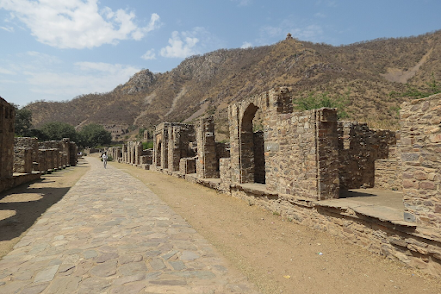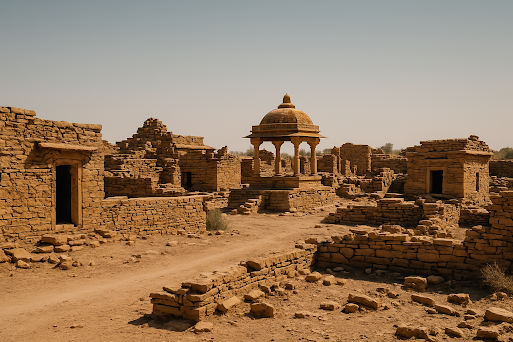🏯 Bhangarh Fort – The Cursed Ruins Of Rajasthan Or Abandoned Glory?
Good to know: Bhangarh is located in the Alwar District of Rajasthan in India
Constructed: 17th century (circa 1613 CE)
Abandoned: Early 18th century
Known For: Haunted legends, stunning ruins, ASI’s “no entry after dark” rule
🌄 Introduction: History and horror go hand in hand
Bhangarh Fort isn’t just yet another crumbling monument — it’s where history and horror shake hands. By day, it’s a photographer’s dream of temples and palaces; by night (forbidden in writing) it plays out the backdrop of ghost stories.
But what’s real? Let’s dig beyond the curse.
⏳ The Confirmed Timeline: Boom and Bust
🏰 Who Built Bhangarh?
Under: Raja Madho Singh (younger brother of Man Singh I, trusted general of Akbar)
Timeline: Built in 1613 CE as a prosperous city featuring:
- four grand gates (they are still there).
- Hinduism temples (Gopinath, Someshwar, Mangla Devi).
- Palaces, bazaars, and step-wells that once defined a thriving kingdom
📜 Why Was It Abandoned?
War Theory: Invaded by the Marathas in the 18th century, leading to decline.
Famine Theory: Droughts made survival difficult in this arid region.
Political Shift: The Kachwaha rulers moved their capital to Alwar, leaving Bhangarh to decay.
Note: There are no mentions of a “curse” as the cause in historical records; just typical medieval upheaval.
👻 The Legend: Tantrik’s Curse or Tall Tale?
The community members in this region believe in this historical account despite historians tracing events to warfare and starvation.
🧙 The Sorcerer’s Revenge:
- Princess Ratnavati earned fame for her outstanding beauty while residing in Bhangarh.
- Singhia the black-magic tantrik developed a romantic interest in her which led him to try and cast a spell on her perfume.
- The princess stopped him from casting his spell so he placed a curse upon the fort stating that its walls would crumble and its spirits would never find peace.
- The fortress of Bhangarh faced troops during battle while the princess later passed away.
Reality Check:
- All historical Mughal/Kachwaha documentation lacks any evidence about Ratnavati or Singhia.
- The same type of folklore about mystics receiving scorn exists at multiple Indian fortifications including the example of Kuldhara.
- Safety protocols at the site maintain official reasons of crumbling structures and wildlife presence while actively sustaining the supernatural beliefs.
- People visiting the site often experience chilling breezes and faint voices which most likely stem from wind passing through the archaeological remains.
- The Bollywood films Raaz and Bhool Bhulaiyaa along with television shows have amplified the mythological aspects of the place.
- The acceptable visiting times run from sunrise until 5:00 PM while after dark access remains prohibited.
- Getting a guide will assist you in distinguishing between reality and myth.
- Tourists should consider visiting Sariska Tiger Reserve because it lies 30 kilometers away from Bhangarh.





Comments
Post a Comment